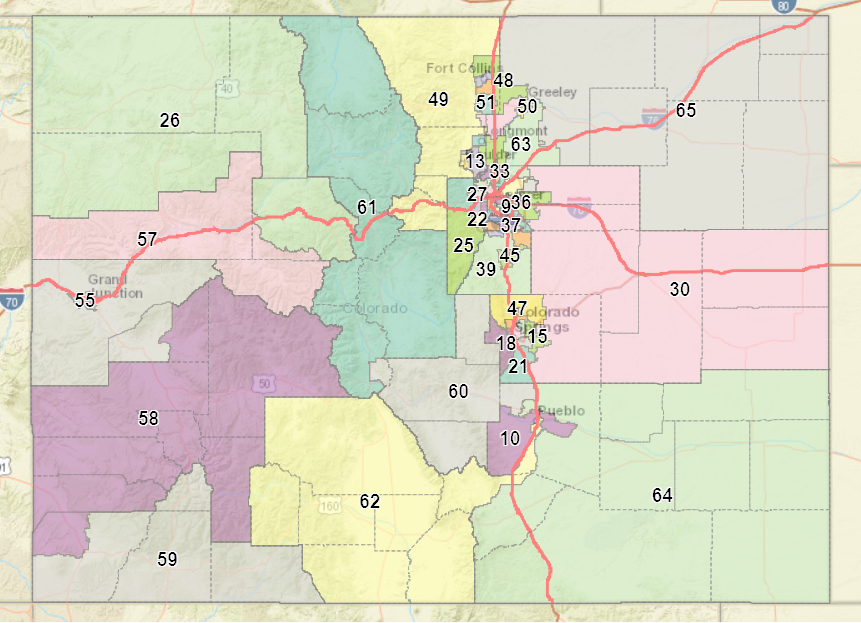
Both chambers of Colorado’s legislature are likely to stay under the control of Democrats for the coming years based on maps approved by the Independent Legislative Redistricting Commission.
The politically balanced commission — made up of four Democrats, four Republicans and four unaffiliated voters — agreed to final plans for the House and Senate ahead of a deadline Tuesday night.
The maps now go to the state Supreme Court to weigh whether commissioners fulfilled their responsibilities and met the redistricting criteria laid out in the state constitution. If challenges to the Congressional map are any predictor, it’s likely a variety of groups will weigh in to urge changes.
States have to redraw their districts every ten years, after the census, to account for population changes and to equalize representation. Under the new maps, each of Colorado’s 35 state senate districts has as close to 164,963 residents as possible. The target for the 65 House districts is 88,826 residents.
Nonpartisan staff still need to hammer out final minor changes to both maps, but it looks like the new House lines create 36 seats where Democrats have won by five percent or better, based on an average of eight recent statewide elections. Republicans have twenty seats where their margin is five percent or more. And nine seats have an average margin of less than five percent, making them highly competitive.
In the Senate, it appears likely 18 seats will go to Democrats, while nine are solidly Republican. Eight seats are likely to swing, with margins of less than five percent and some lower than one percent.
Colorado has trended increasingly blue over the last decade; it’s now represented in Congress by two Democratic senators and the House delegation is split 4-3 in the party’s favor. Republicans currently only hold one statewide elected office — an at-large seat on the CU Board of Regents.
When it comes to Latino representation, which has been a major concern with both Colorado’s legislative and Congressional maps, the state House would have sixteen seats where Latino residents make up 30 percent or more of the population. Of those, all but two are likely to be represented by Democrats.
“Minority voters have frequently faced discrimination in voting, due in part to the redistricting process, and I've worked very hard to ensure their voices, our voices, have been heard and incorporated to the best of my ability into this process,” said Democratic commissioner Heather Barry from Westminster.
The Colorado Sun reports the map draws at least sixteen House incumbents into districts together, but because some of them are limited or seeking higher office, it would likely only result in at most four races with sitting House members running against each other.
After agreeing unanimously on a Senate map late Tuesday night, commission members congratulated each other, and the nonpartisan staff, on the work they’d done. This is the first time Colorado has used an independent commission to redraw its political lines, something few other states do.
“I think we set an example,” said Republican commissioner John Buckley of Colorado Springs. “Ronald Reagan said it's amazing how much you can get done if you don't care who gets the credit — that's a paraphrase, but we've proved that.”
The commission’s chair, Carlos Perez, an unaffiliated voter from Colorado Springs, urged future political candidates not to look at the new boundaries as battle lines, “rather, look at the new maps as a gift of good government from us, to solve problems and correct injustices for the citizens who live in your communities.”








